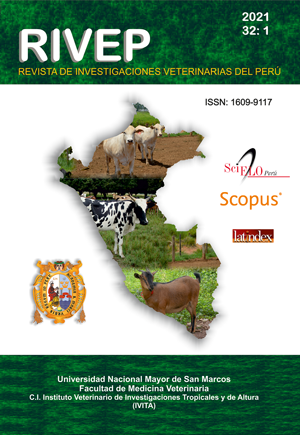Homeotherapy as a treatment of cauda equina syndrome in a cat: case report
DOI:
https://doi.org/10.15381/rivep.v32i1.16082Keywords:
Cauda equina, Homeopathy, Neural therapy, Cannabis sativaAbstract
At the Small Animal Clinic of the University of Amazonia, a female crossbreed feline arrives with a right pelvic limb neuromotor disorder, alteration of behavior and urinary and fecal incontinence. The tests performed showed kidney infection and Mycoplasma spp., A ventro-dorsal radiography of the lumbosacral region showed bilateral sacral-iliac dislocation, and consequent compression of the nerve roots of the vertebral canal, compatible with cauda equina syndrome. The implementation of a therapeutic protocol with 1% plus Neuralgo® and Inmul-V® (neural therapy), with applications of 0.1 ml in each intervertebral space and the femoral nerve of the affected limb, Cannabis sativa as an analgesic and physical therapies recovery of member functionality almost 100% in three weeks. This protocol reduced the recovery time and the presentation of side effects in the patient.
Downloads
Downloads
Published
Issue
Section
License
Copyright (c) 2021 Nicolás Ernesto Baldrich Romero, Giselle Aroca Barbosa, Santiago Hoyos Martínez, Beatriz Elena Patiño Quiroz

This work is licensed under a Creative Commons Attribution-NonCommercial-ShareAlike 4.0 International License.
AUTHORS RETAIN THEIR RIGHTS:
a. Authors retain their trade mark rights and patent, and also on any process or procedure described in the article.
b. Authors retain their right to share, copy, distribute, perform and publicly communicate their article (eg, to place their article in an institutional repository or publish it in a book), with an acknowledgment of its initial publication in the Revista de Investigaciones Veterinarias del Perú (RIVEP).
c. Authors retain theirs right to make a subsequent publication of their work, to use the article or any part thereof (eg a compilation of his papers, lecture notes, thesis, or a book), always indicating the source of publication (the originator of the work, journal, volume, number and date).










